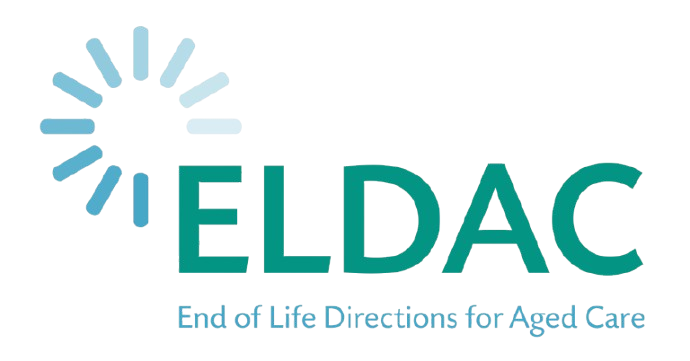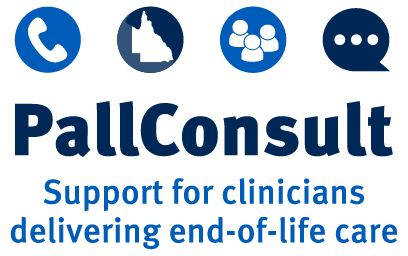
Resthaven Inc - Wayville, South Australia
Services Offered
Aged care service provider, offering in home community services, residential aged care, and retirement living. we are a not for profit organisation, only operating in South Australia.
SPICT Uses
The SPICT is used as a part of admission and scheduled assessment of residents in residential aged care homes and as a part of a nursing assessment in community services.
It is used to identify individuals who are at risk of dying, who have deteriorated, and to inform advanced care discussions, and the urgency to raise palliative care and end of life care decisions by the individual or substitute decision makers.
Other Information
We are gonig to put the SPICT tool into our electronic Management systems
Website: resthaven.asn.au
Contact: Ms. Merridy Baylis
Email: [email protected]
Lutheran Services - Queensland
Services Offered
Lutheran Services offers residential aged care services, howe care services and disability services.
SPICT Uses
The SPICT tool will be replicated in our clinical software with reference to who created the tool. it will be implemented to regularly monitor for signs of deterioration and assist clinicians in responding to same and directing focus to a palliative approach where needed and requested.
Website: lutheranservices.org.au
Contact: Miss Melanie Wagner
Email: [email protected]

Brightwater Group - Inglewood
Services Offered
Brightwater is a leading not-for-profit care provider, with approximately 2400 employees and 200 volunteers, that support 2400 clients in 28 locations and in their own homes across the Perth metropolitan area. With a history of providing care since 1901, Brightwater has expertise in aged care, dementia care, Huntington’s disease, disability support and acquired brain injury rehabilitation.
Brightwater delivers integrated residential, and community based aged and disability care services at:
• 13 residential aged care facilities from Joondalup to Mandurah, including a dementia specific
high care facility in Inglewood
• 10 disability community houses across the Perth metropolitan area including two houses
dedicated to people with Huntington’s disease (and a new purpose built home currently about
to commence construction)
• Dementia specific high care facility in Inglewood
• Transition Care Program (TCP)
• Brightwater at Home provides home care services to more than 1,000 people across the
Metropolitan Area, with the goal to keep them independent at home for as long as possible
• A retirement community at Kingsway Court (with 168 villas)
• Our Capacity Building Program that offers disability services for people living in the
community.
SPICT Uses
Brightwater group certainly understands that palliative care is ‘core’ to the business of caring for people throughout the continuity of life. The SPICT and the ‘SPICT for All’ is used to help our clinicians identify clients with palliative care needs, that then enables improved assessment, symptom management, carer support which ultimately prompts advance care planning discussions, and care that is delivered in line with a person’s life values and wishes.
Website: brightwatergroup.com
Contact: Mr. Ed Gaudoin
Email: [email protected]

ELDAC (End of Life Directions for Aged Care) - Sydney
Services Offered
End of Life Directions for Aged Care (ELDAC) is a project that seeks to improve the care of older Australians through advance care planning activities and palliative care connections. ELDAC is supporting the aged care workforce to provide quality palliative care through:
- Sharing free palliative care and advance care planning information, guidance, and resources that are evidence-based on the ELDAC website;
- Developing innovative palliative care technology solutions for aged care;
- Building workforce capacity through education;
- Creating partnerships between specialist palliative care and aged care services;
- Providing evidence and resources to support system capability.
The ELDAC project is funded by the Australian Government Department of Health and Aged Care.
SPICT Uses
ELDAC recommends through our website and engagement with the aged care sector the SPICT as part of best practice for end of life care across all aged care settings. The SPICT is part of ELDAC’s suite of Common Clinical Tools that are evidenced-based and free to use. We also suggest that our aged care service partners participating in the ELDAC Linkages Program use the SPICT in their practice.
Website: endoflifeessentials.com.au/
Contact: Prof. Deborah Parker
Email: [email protected]
Department of Health, Government of Western Australia - Sydney
Services Offered
WA Health is Western Australia’s public health system. It covers 2.5 million square kilometres and is the largest area in the world covered by a single health authority. WA Health employs 43,000 staff who ensure the well-being of the State’s ever-increasing population throughout metropolitan, regional and remote areas.
SPICT Uses
SPICT is used as a tool to help medical staff develop essential knowledge, skills and confidence, to be applied when initiating and engaging in patient-centred conversations, particularly about CPR decision-making.SPICT uses:As part of a teaching resource to support decision-making and effective communication about cardiopulmonary resuscitation in the hospital-based setting. The teaching resource, developed by a team of Australian clinicians with different specialties, comprises a facilitator’s guide, videos and supporting resources. The facilitator guide with videos uses the SPICT indicators to assist clinicians identify and collaborate with patients who will more likely benefit from advance CPR decision-making.
Download the online resources: Advance CPR decision making in the hospital setting: teaching package.
Contact: End-of-Life Care Program Hurst
Email: [email protected]

caring@home - Eight Mile Plains QLD
Services Offered
The caring@home project aims to support quality and timely end of life care for patients who choose to be cared for and die at home, if possible.
It is an Australian- Government funded project that continues to develop and provide free nationally consistent, practical, and evidence-based clinical resources and education for health professionals that supports:
– Pro-active planning for end- of- life care
– Families and carers to help manage breakthrough symptoms at home
– Patients to be cared for and die (if possible) in their place of choice.
SPICT Uses
caring@home recommends that the SPICT tool be used as a part of the trigger to commence care planning for the last 12 months of life as per the Palliative and End-of-life Framework: an evidence-based, best practice framework developed by caring@home.
Website: caringathomeproject.com.au/
Contact: Miss Jaimee Stimson
Email: [email protected]

PallConsult, Brisbane South Palliative Care Collaborative
Services Offered
The PallConsult service, is designed to boost capacity of local health care teams to deliver high-quality person-centred palliative and end-of-life care. The service provides specialist palliative care 24/7 telephone advice to clinicians; as well as providing tailored education, vocational training, mentoring and resources for health and aged care professionals across Queensland.
SPICT Uses
The SPICT is included in PallConsult education, training and mentoring as part of evidenced-based resources and tools to support and be used by clinicians as part of their assessment to identify patients who would benefit from palliative care.
Website: health.qld.gov.au
Contact: Dr. Greg Parker
Email: [email protected]
Australian eHealth Research Centre CSIRO - Brisbane
Services Offered
The Australian e-Health Research Centre (AEHRC) is CSIRO’s digital health research program – enabling the digital transformation of healthcare to improve services and clinical treatment for Australians. We have world leading capability in areas such as clinical terminology and data interoperability; health data analytics; clinical image analysis; genomics data analytics and engineering; biostatistics, mobile health, tele-health and health internet of things, amongst many others. We work with many collaborators across the healthcare system to improve diagnosis and treatment across Australia and internationally.
SPICT Uses
The end goal is to digitise the SPICT tool so as to integrate with current aged care facility practices. It is hoped that this will improve the provision of end-of-life care for those receiving it and those delivering it.
The AEHRC CSIRO are working in partnership with the Queensland University of Technology to deliver this project.
Website: aehrc.csiro.au/
Contact: Ms. Liesel Higgins
Email: [email protected]

East Metropolitan Health Service - Perth
Services Offered
East Metropolitan Health Service (EMHS) comprises an extensive hospital and health service network that aims to maintain and improve the health and wellbeing of more than 725,500 Western Australians in its catchment area.
Our hospital network works together to provide a combination of tertiary, secondary and specialist health care services including emergency and critical care, state trauma, elective and emergency surgery, general medical, mental health, inpatient and outpatient services, aged care, palliative care, rehabilitation and women’s, children’s and neonates services.
EMHS recognises the multifaceted challenges associated with the different stages of the end-of-life journey and is committed to person-centre care while a person is living with a life-limiting condition and in the lead up to their death, as well as support for the person’s carer and family, including after the person’s death.
SPICT Uses
EMHS plans to use the SPICT as part of multi-tiered education approach around end-of-life and palliative care across the service; making the SPICT available to clinical staff to support the timely identification of people who would benefit from Goals of Patient Care discussions and referral to palliative care; and in the longer term, integrating the SPICT into systematic approaches to caring for people nearing end-of-life.
Website: emhs.health.wa.gov.au/
Contact: Jillian Abraham
Email: [email protected]

End-of-Life Essentials - Flinders University
Services Offered
End-of-Life Essentials is an Australian government funded project offering free peer-reviewed online education modules on health care at the end of life in acute hospitals for nurses, doctors and allied health professionals.
A range of implementation tools are also available to assist managers and clinicians to implement a unified approach to strategies and processes which will inform end-of-life care.
End-of-Life Essentials is based on the Australian Commission on Safety and Quality in Health Care’s National Consensus Statement: Essential elements for safe and high-quality end-of-life care, and the Commission provides ongoing advice to the project.
SPICT Uses
The SPICT is included in resources of evidence-based and useful tools to assist health care professionals identify patients who are at the end of life and enhance the safety and quality of services provided.
Website: endoflifeessentials.com.au/
Contact: Mrs. Vanessa Heading
Email: [email protected]

WA Country Health Services (WACHS) - Perth
Services Offered
WA Country Health Service (WACHS) provides healthcare to more than 500,000 rural and remote West Australians across an area of more than 2.5 million square kilometres.
The population we provide care to is diverse and expansive and as a result has widely varying health needs. With this, our palliative care services are continuing to grow through the early identification of palliative care patients within the regions.
Across the state we have six large regional hospitals, 15 medium sized district hospitals and 48 small hospitals. Along with this there are 31 health centres and nursing posts, four dedicated mental health inpatient units and 24 dedicated mental health services, which also provide outreach services to more remote locations, and over 170 other facilities where population health teams are based.
SPICT Uses
The Supportive and Palliative Care Indicator Tool (SPICT) supports the WA Country Health Service’s commitment to providing the best possible palliative care closer to home for our regional patients.
SPICT supports our specialist and generalist clinicians to understand that palliative care is wider than providing support to those with cancer.
SPICT facilitates early identification of all palliative care patients, enables improved symptom management and prompts discussion with the patient and carer about their values and wishes for future care.
Website: wacountry.health.wa.gov.au
Contact: Ed Gaudoin
Email: [email protected]

Carinity - Baptist Community Services - Brisbane
Services Offered
We are an aged care organization Carinity- Baptist Community Service, currently with 11 Residential aged care services are working to improve our palliative care approach. Hence the request to use this form electronically and load onto iCare . We would like to use it as part of our initial and on-going assessment of residents so we can track current trajectory of residents care.
SPICT Uses
We currently have a partnership with ELDAC ( palliative care) and it was their suggestion that we uses this tool to ensure we follow best practice ideals.
Website: carinity.org.au
Contact: Mrs. Rosemary Butterfield
Email: [email protected]
Darling Downs Hospital Health Service - Queensland
Darling Downs Health provides public hospital and healthcare services to nearly 300,000 people from 29 facilities, which includes one large regional referral hospital, one extended inpatient mental health service, three medium sized regional hub hospitals, twelve rural hospitals, three multipurpose health services, three community outpatient clinics and six residential aged care facilities. Darling Downs Health also has a learning, research and innovation role. Darling Downs Health partners with a number of tertiary education institutions to provide undergraduate and postgraduate clinical placements.
The Darling Downs Health region is a large and diverse geographic area covering some 90,000 square kilometres. We are one of the largest employers in the region, employing more than 5,000 people, and managing a budget of more than $750 million annually.
Toowoomba Hospital is a secondary hospital and is the largest hospital in Darling Downs Health providing ambulatory care (including Emergency Department, Specialist Outpatient Services, Day Procedures Unit Dialysis and Oncology services), acute inpatient care including Medical, Surgical, Orthopaedic, Obstetrics and Gynaecology, Paediatrics, Special Care Nursery, Intensive and Coronary Care, Theatre, Geriatric Adult Rehabilitation and Stroke Service (GARSS), Aged Care and Palliative Care.
Further details about Darling Downs’ other hospitals and health services can be found at: https://www.health.qld.gov.au/darlingdowns/locations
SPICT Uses
The 2019 SPICT and SPICT-4ALL tools will be modified to include the Darling Downs Health logo and adopted along with Using SPICT guides tailored to the local health needs and services in Darling Downs Health area.
The SPICT tools will be used to assist clinicians to identify patients who might benefit from end-of-life care planning. The RED-MAP framework ,resources and teaching videos will be utilised to facilitate discussions about end-of-life care.
The tools will be available to in-hospital and community-based clinicians, including General Practitioners working with Darling Downs Health.
Website: https://www.health.qld.gov.au/darlingdowns
Contact: Natalie Fry
Email: [email protected]
